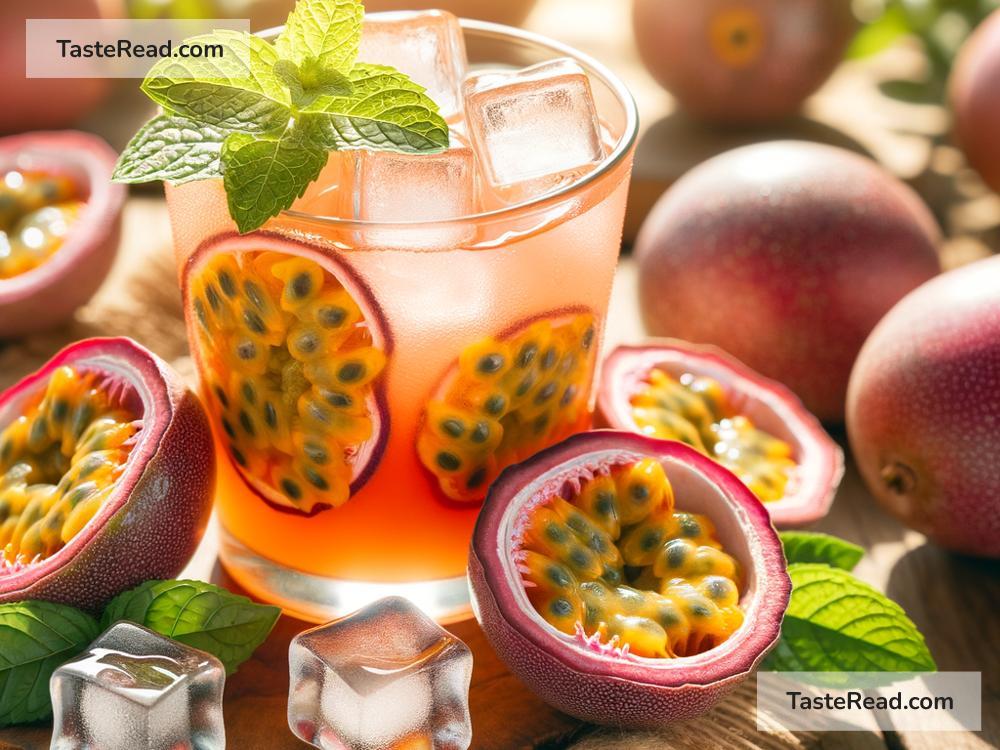The Curious Story of Passion Fruit in Global Beverages
Passion fruit is one of those flavors that seem to pop up everywhere in the world of drinks. From fancy cocktails to refreshing juices, and even in sports drinks, this tropical fruit has won the hearts of people across the globe. But why did passion fruit become a favorite in beverages worldwide? Let’s dive into the fascinating journey of this unique fruit and how it became a global sensation.
What Is Passion Fruit?
Passion fruit might sound exotic to some, but it’s actually a small, round fruit that grows on a climbing plant called Passiflora. Its origin is believed to be in South America, specifically in Brazil, Paraguay, and Argentina, where it thrives in tropical and subtropical climates. The fruit comes in two common varieties: purple passion fruit and yellow passion fruit. Each has a tough outer skin but is filled with sweet, tangy pulp and small edible seeds inside.
While passion fruit tastes delicious, its name often confuses people. The term “passion” doesn’t refer to romantic feelings; instead, it comes from the religious connection to the “passion,” or suffering, of Christ. Spanish missionaries in South America gave the plant its name because the beautiful flowers of Passiflora symbolized elements of the crucifixion story.
From South America to the World
South America may be its native home, but passion fruit didn’t stay there for long. Thanks to its incredible flavor and aroma, explorers and traders introduced the fruit to other parts of the world in the 16th century. It made its way to Africa, Asia, and Oceania, adjusting well to similar tropical climates.
By the early 20th century, passion fruit gained popularity in places like Hawaii, Australia, and New Zealand. Farmers began cultivating it commercially, which made passion fruit more accessible to larger populations. Over time, its sweet yet tart flavor started showing up in recipes, desserts, and drinks.
Passion Fruit’s Unique Flavor Profile
One of the main reasons passion fruit became so popular in beverages is its unique flavor. It’s a mix of sweetness and tartness that creates a refreshing taste perfect for drinks. Unlike other fruits that can overpower or fade in certain recipes, passion fruit has a bold and distinctive flavor that stands out.
Its tropical vibe also makes it a favorite for people looking for drinks that remind them of sunny beaches and vacations. Whether paired with other fruits like mango or pineapple, or used on its own, passion fruit adds an extra layer of excitement to beverages.
Passion Fruit in Global Beverages
Passion fruit’s versatility has made it a favorite ingredient in various drinks around the world. Let’s take a closer look at some popular ways passion fruit is used in beverages:
1. Juices and Smoothies
Passion fruit juice is a staple in tropical countries. In South America, people mix the pulp with water and sugar to make a refreshing drink. In other regions, passion fruit often pairs with other fruits in smoothies, creating tasty blends with mango, banana, or orange. The pulp’s natural sweetness makes it a healthy choice for juices without needing too much added sugar.
2. Cocktails and Mocktails
Passion fruit has become a star ingredient in cocktails and mocktails. Its tangy flavor balances alcoholic drinks like rum, vodka, and tequila, making it ideal for tropical cocktails. The famous Pornstar Martini cocktail, which originated in London, uses passion fruit as its highlight ingredient. The fruit also shines in non-alcoholic beverages, giving mocktails a burst of flavor and vibrancy.
3. Iced Teas and Lemonades
Many brands offer passion fruit-flavored iced teas and lemonades. These drinks are often marketed for their refreshing and exotic appeal, especially during summer months. The combination of passion fruit with tea or citrus flavors creates a drink that feels light yet indulgent.
4. Packaged Beverages
Global beverage brands have capitalized on the passion fruit craze by introducing it in sodas, energy drinks, flavored waters, and even canned cocktails. Major companies use passion fruit as a key ingredient in their tropical product lines to attract adventurous consumers.
5. Bubble Tea
In Asia, passion fruit has also found a home in bubble tea shops. The fruit’s vibrant, tangy taste pairs well with tapioca pearls or jelly, offering a delicious blend of textures and flavors.
Why Is It So Popular?
Passion fruit’s popularity in beverages is due to more than just its taste. It’s packed with vitamin C, antioxidants, and other nutrients, making it an appealing health-conscious choice. Additionally, its tropical image gives brands plenty of marketing opportunities, tapping into consumers’ desires for unique, exotic flavors.
The adaptability of passion fruit also plays a role. Whether you want something healthy, indulgent, or creative, passion fruit fits the bill. Its ability to pair beautifully with other flavors has made it a go-to ingredient for drink creators worldwide.
A Flavor Here to Stay
Today, passion fruit is no longer just a tropical delicacy from South America; it’s a global superstar in beverages. As the world becomes more interconnected, exotic flavors find their way into kitchens and cafés in every corner of the globe.
With its bold taste, vibrant color, and health benefits, passion fruit has proven that it belongs on menus everywhere—from smoothie bars to cocktail lounges. Whether you sip on a passion fruit margarita or enjoy it in your favorite sports drink, one thing is certain: this little fruit has made a big impact on the world of beverages.
So next time you see passion fruit on a drink menu, give it a try. With every sip, you’re tasting the curious story of a tropical fruit that traveled across continents to become a global favorite. Cheers!


